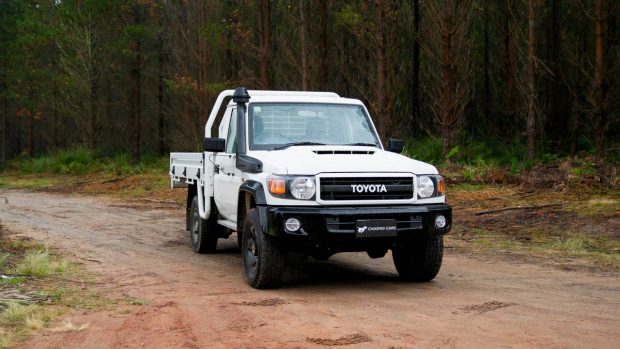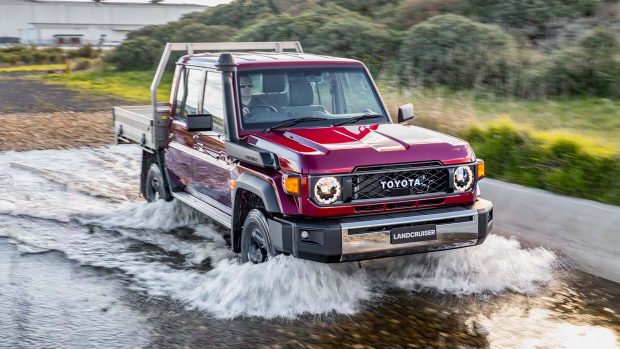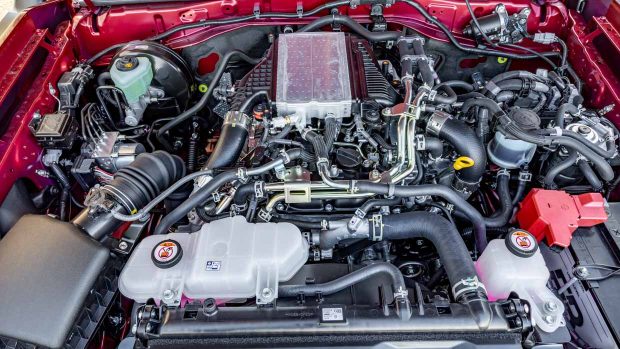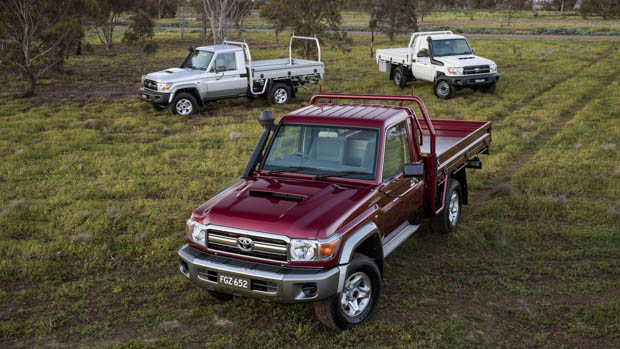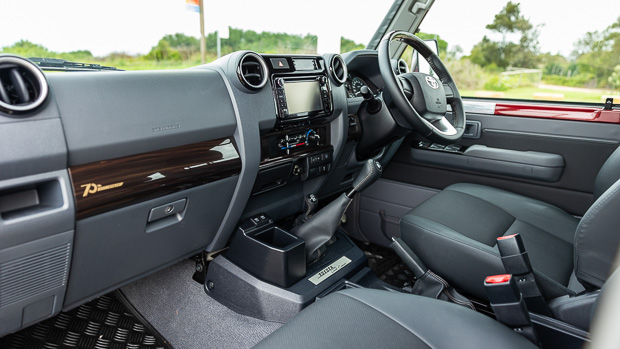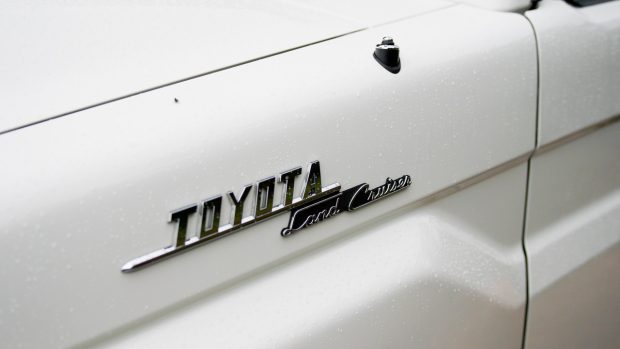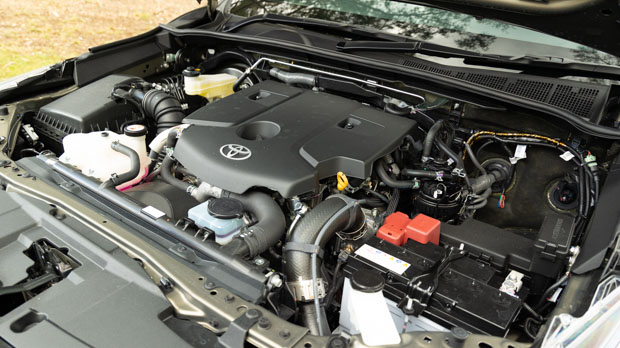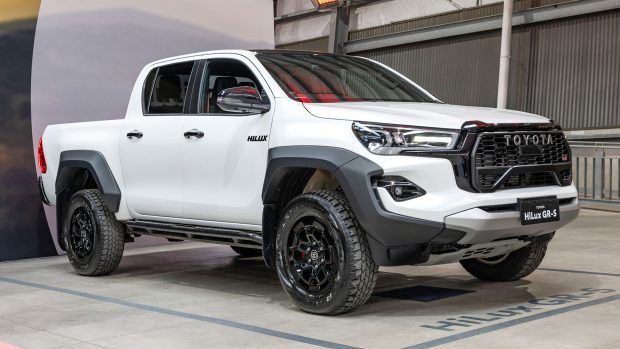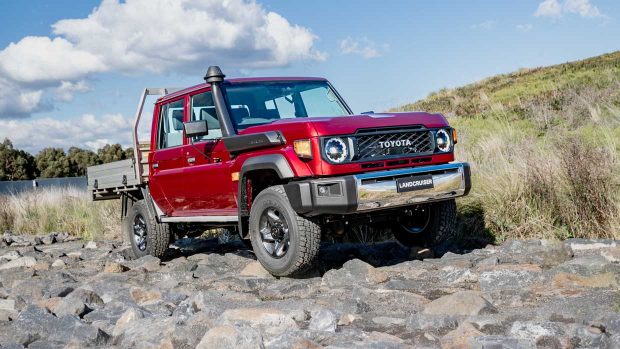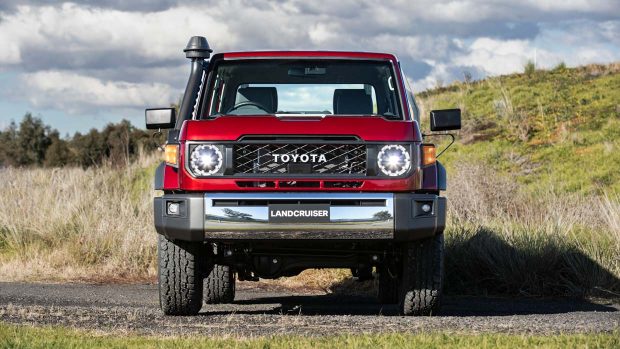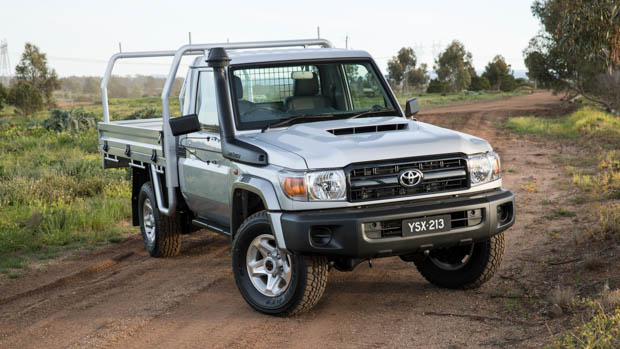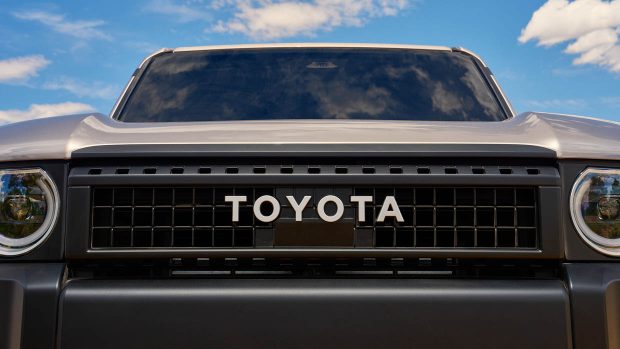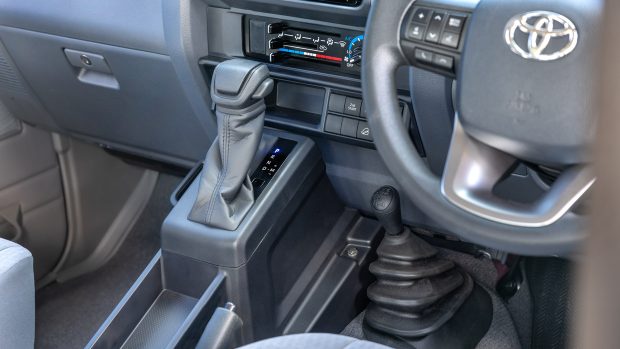-
Car Reviews
- All reviews
- Midsize SUVs
- Small cars
- Utes
- Small SUVs
- Large SUVs
- Large cars
- Sports SUVs
- Sports cars
- Vans
Latest reviews
- Car News
-
Car Comparisons
Latest comparisons
- Chasing Deals
What would have been unthinkable even a few years ago became necessary due to supply shortages and corporate demands for an automatic
Toyota Australia enjoys massive demand for its traditional V8-powered Land Cruiser 70 Series lineup of wagons and utes – and with six-figure transaction prices on some variants, some Toyota dealers charge keen buyers accordingly.
Wait times on the venerable 70 Series range became dire in 2022, with Toyota dealers telling buyers their new cars would be delivered in three or four years – or “never”, according to the most pessimistic of the lot.
Why have V8 70 Series delays been so extensive? Famously private Toyota has never been totally forthcoming about the answer, but it’s a combination of relatively limited production of the niche models and their single-turbo 4.5-litre engine, plus high demand from other global customers.
But with Aussie demand continuing to be high even after the pandemic – which saw scores of Australians embrace domestic road trips – has receded, Toyota’s local arm hatched a plan to boost 70 Series supply, meet some new customer preferences, and reduce wait times drastically … with a big catch.
Enter “Project WTF”. Seriously: that’s the name of Toyota’s secret plan to add a four-cylinder turbo diesel engine to the 70 Series lineup alongside the V8. Designed to confuse anyone overhearing it, the name stood for “Why the Four?”
The project started after a visit down under by Land Cruiser engineers in 2018 where customer use cases in central Australia were evaluated under Toyota’s “go to the source” philosophy. Testing of the first prototypes of the four-cylinder began in 2019.
So, why the four?
Chatting to Chasing Cars at a media event earlier this week, Toyota Australia executives said there were three big reasons why Project WTF was initiated – and why the four-cylinder was approved for the facelifted 70 Series that will be released locally in November 2023.
Aside from culling the number of cylinders by half when compared to the 4.5-litre 1VD-FTV single-turbo V8 engine, the incoming 2.8-litre 1GD-GTV single-turbo four-cylinder diesel has another trick up its sleeve.
And it’s one that one group of the most rusted-on 70 Series customers will find even more controversial than the smaller engine itself.
While the 70 Series equipped with the V8 has always been a manual gearbox-only proposition – at least from the factory – the four-cylinder will be the opposite: it has a six-speed automatic transmission with no manual option.
Even though the four-cylinder 70 Series shares its engine with the Toyota Hilux – which continues to be available with a choice of six-speed manual or auto – the 70 Series ‘four does the shifting for you.
Toyota downplays the suggestion that the engine was carried over from the Hilux without considering the differences inherent to 70 Series duties.
“Don’t assume we’ve simply taken the [1GD-GTV] engine out of the Hilux,” said Sean Hanley, Toyota Australia vice president of sales and marketing.
“We have made a raft of changes to ensure [it] lives up to the high expectations of 70 Series drivers, including modifications to the gearing and cooling.”
“The four-cylinder does everything the V8 does, but it’s easier to drive,” one executive told us, noting that having an automatic was key to getting Project WTF approved. There was no consideration given to a manual-only four-cylinder.
“Customers expressed strong demand for an automatic transmission as it makes the vehicles so much easier to handle in conditions like towing trailers through sand,” said Hanley.
While plenty of regular Aussie customers of the 70 Series buy the vehicle partially because of the clout of its venerable V8 engine, corporate customers are less drawn to that nostalgic touch and have been privately lobbying Toyota Australia for an engine upgrade for some time.
For those customers – think the big miners and other companies with big distances to drive deep in regional Australia – the switch from a V8 to a four-cylinder is exactly that: an upgrade.
Toyota corporate client sources speaking confidentially to Chasing Cars say that several significant business customers have been switching their purchases away from the 70 Series to the Hilux in recent years.
“It is a vehicle relied on by park rangers working way off the beaten track and delivering essential services to remote communities,” said Hanley.
“It’s so important to continue production of the 70 Series for our market.”
That is despite the fact that, while well-regarded, the current Hilux does not have the 70 Series’ reputation for absolute longevity. The reason for the switch has been the Hilux’s four-cylinder engine, automatic transmission, and most importantly, improved fuel economy.
Now that the 70 Series picks up all of those upgrades it is expected that corporate buyers who prefer the traditional Land Cruiser model will stick with it and that most will opt for the four-cylinder – not the V8.
“They came and they saw how real customers used this vehicle in places like Central Australia, driving under extreme terrain and in super-remote areas.”
The 2.8-litre four-cylinder engine is similarly powerful to the V8 (150kW compared to 151kW) but torque shoots up 70Nm to 500Nm.
Plus, the fuel economy of the 70 Series four-cylinder is expected to be 10-20 percent lower than the V8, which claims just under 11L/100km in mixed duties.
While there’s never a guarantee of future supply being without constraint, it is understood that Project WTF was also bolstered by the significantly higher production of the 2.8-litre four-cylinder diesel – a familiar engine used throughout Toyota’s lineup.
Limited production of the turbocharged 4.5-litre diesel V8 is one reason for the long wait times associated with the 70 Series. While the four-cylinder won’t fix everything, it will reduce the impact of a powertrain-related bottleneck in getting cars to Australian buyers quicker.
Toyota is well aware of the high level of demand for the 70 Series and backlog management has become a core part of the company’s customer care tasks in recent years, with extensive wait times across many models. The 70 Series has been the worst, but the RAV4 and Camry hybrids have also been severely affected.
Reducing the 70 Series backlog is a major priority, and it’s understood that buyers in the years-long queue for the V8/manual version will be given an early shot at converting their orders to the four-cylinder/automatic in order to slash the wait.
For now, Toyota Japan will, in fact, continue to build the V8 70 Series for Australian buyers – so Aussies who insist on waiting for the eight-cylinder should theoretically get their car, eventually. And with many buyers expected to switch their order to the ‘four, the V8 queue might even get shorter.
If the four-cylinder is more popular than expected, it wouldn’t be out of the question for it to become the sole 70 Series engine for Australia in future.
For some 70 Series traditionalists, that thought may truly be a “WTF” moment.
But that moment isn’t here yet.
“You’re not too late [to order] a V8, although our order pause remains in place for now while we work through the customers that have been waiting,” said Toyota boss Hanley.
Orders open for the facelifted 70 Series with the four-cylinder engine and automatic transmission in October 2023. Prices for the model will also be revealed around that time.
The facelifted model with the new engine will be released in November 2023 and initial deliveries to customers will occur that month.
Incoming deliveries of the V8 will switch to the facelifted model too, in November or December most likely, but Toyota Australia has not lifted its long-running stoppage on new orders for the V8.
So the only Australians who can get their hands on a facelift 70 Series with the V8 engine are those already in the queue – for now.
That means that if you want to place a new order, that will mean you’ll be getting a four-cylinder.
Latest news
About Chasing cars
Chasing Cars reviews are 100% independent.
Because we are powered by Budget Direct Insurance, we don’t receive advertising or sales revenue from car manufacturers.
We’re truly independent – giving you Australia’s best car reviews.
